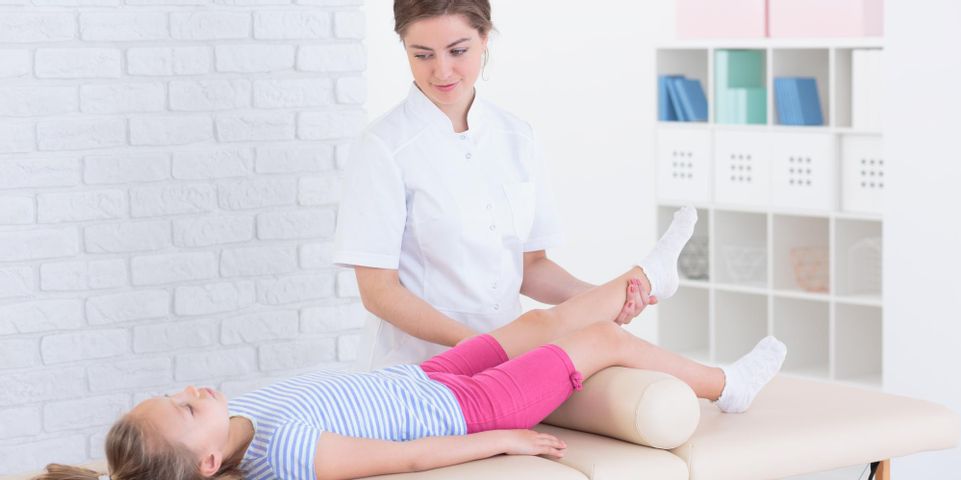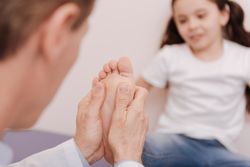
From the time they can walk, your children will tend to have boundless energy, running around and playing whenever you let them loose. Sometimes, though, health issues like childhood arthritis can interfere with a child’s ability to enjoy everyday activities. For the sake of their long-term joint health, you must address any pain with your child’s family care physician to find a way past this condition. Here are different types of childhood arthritis your child could have and what symptoms they may acquire.
The Types of Juvenile Arthritis
Systemic Arthritis
 Also known as Still’s Disease, systemic arthritis can affect the entire body. While children will complain of joint discomfort, the telltale signs that will like their inflammation to this strain of childhood arthritis are high fever and a salmon-colored rash. It can also cause inflammation on internal organs, such as the spleen, liver, lungs, or heart.
Also known as Still’s Disease, systemic arthritis can affect the entire body. While children will complain of joint discomfort, the telltale signs that will like their inflammation to this strain of childhood arthritis are high fever and a salmon-colored rash. It can also cause inflammation on internal organs, such as the spleen, liver, lungs, or heart.
Oligoarthritis
This type of childhood arthritis typically affects fewer than five joints within the first six months the child has it. Oligoarthritis is also named pauciarticular juvenile rheumatoid arthritis, and it affects the knees, ankles, or wrists. Some children might experience inflammation of the eye, namely the iris. Regular checks with a doctor can assure this symptom doesn’t affect one’s sight long term. The symptoms of oligoarthritis, in general, are most likely to go away and leave little or no long-term damage.
Polyarthritis
This disease, also called polyarticular juvenile idiopathic arthritis (pJIA), causes issues in five or more joints within the first six months that a child has it. It can particularly affect the jaw, neck, hands, and feet. For children, exposure to risk factors, like smoking in the home, can make it more likely for them to develop polyarthritis.
Psoriatic Arthritis
With this condition, joint inflammation pairs with the skin condition known as psoriasis. These two conditions are linked because they are both the result of an autoimmune response errantly attacking healthy parts of the body. A child may display symptoms of one condition years before they see signs of the other. For example, they may experience the irritation, rash, and flaky skin associated with psoriasis but only experience the joint discomfort later in life. Kids who have psoriatic arthritis also tend to have pitted fingernails.
Enthesitis-Related Arthritis
This type of arthritis creates issues for the spine, hips, eyes, and entheses, the areas where tendons attach to bones. Boys eight years old or older are most likely to have this disease, and there is often a family tie to arthritis of the back among their male relatives if they have it.
Symptoms of Juvenile Arthritis
Joint Pain
The most obvious sign of arthritis in children is joint stiffness, particularly when they first wake up in the morning. They may complain of outright pain, and the affected joint may show signs of swelling and tenderness. In younger children, in particular, you might notice difficulty with motor skills that they have recently learned. As they get older, a limp while walking or other signs of discomfort in movement will signal that you need to see a family care physician.
Rash
Since arthritis is an adverse autoimmune response, sometimes it can trigger inflammation of blood vessels, manifested as a rash on the skin. If your child’s body responds in this nature, it is during a “flare,” or a period where symptoms of arthritis get worse. Flare-ups are triggered by a lack of treatment or exposure to an activity that creates trauma in the affected joints. Weight gain, stress, even cold weather are other factors that trigger flare-ups. Other symptoms that can exist during these periods can be persistent fevers and fatigue.
Eye Issues
While arthritis is widely associated with joints, the inflammatory nature of the disease can affect other parts of the body, particularly the eyes. Dry eye can affect children with juvenile arthritis, which can lead to infection and even damage to the cornea if left untreated. The disease can also create inflammation of the white part of the eye, known as the sclera. This issue can result in eye redness and pain, eventually leading to glaucoma. This condition damages your optic nerves and causes blurry vision without proper insight from a family care physician or ophthalmologist.
How to Treat Childhood Arthritis
Since your child is still growing, it is particularly imperative to address any signs of childhood arthritis as aggressively as possible. The mission of treatment is to relieve pain, swelling, and damage while maximizing mobility in the affected joints as much as possible. Less severe situations will require physical therapy and the occasional ibuprofen for anti-inflammatory care and pain relief, while more extensive circumstances can additionally use corticosteroid injections to address pain. Family care physicians will typically avoid the latter option as much as possible, as they can stunt growth and prohibit weight gain with regular use. Based on the severity of your child’s condition, your child’s doctor can guide you on what the best treatment option would be.
If your child shows signs of juvenile arthritis, turn to the experts at Urgent & Primary Care to address their symptoms. With expertise in both family primary care and rheumatology, this father-daughter team of doctors will effectively diagnose the problem and provide treatment options that work for your family. For more information about this Albany, NY, based medical office, give them a call at (518) 470-3458 or visit their website today.
About the Business
Have a question? Ask the experts!
Send your question

